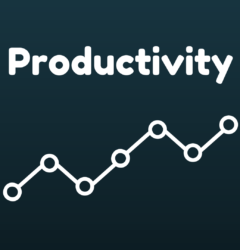How to Choose the Best Project Management Software for Your Team
15 Aug

Table of Contents
ToggleWhat features to look for when choosing the right Project Management Software for your team?
You want the best for your company. No surprise there. Everyone does. From employing the right HR team to exceeding client expectations, there is a lot that a company can do to succeed. And that includes having an effective Project Management team.
If you’re like many companies nowadays who have chosen the route of remote team members. Not only does it allow the freedom for employees to work remotely and avoid the painstaking commute but it saves you on office space and grants you access to an entire world of talent. But no amount of expertise assembled together from the four corners of the earth will be effective without proper project management software to back up their efforts.
Objectives of a Project Management Software
The main objective of your PM team is:
- Managing teams working on various projects
- Planning, executing, and finally closing each project
- Managing the expectations including cost and timeframe
These are things you need to consider when deciding what management software to choose. Are you looking for help with reporting? Do you prefer to customize all models or would you be more comfortable with project management templates? Similarly, PM goals can be broken down into more technical needs by focusing on software that implements tools for communication, automatization, and time tracking apps. Also, be on the lookout for software with excellent security data protection.
To make the decision on what will fit your company’s needs the most, consider using a decision mental model to essentially cut through the noise and make a smart decision. Consider it an exercise in project management methodology. While doing so, consider these three questions: Are the communication needs being met? Is the software providing the tools needed for your projects? And finally, is it making the job easier to accomplish?
Keep the communication flowing
Similar to any type of working relationship communication is key. Misunderstanding in the workforce can be detrimental to the progress of any sort of success a company is looking to achieve. More importantly, when your project manager is dealing with a team that works remotely, communication is the only way to thrive. Governance needs to be in place so that everyone is on the same page and responsibilities are understood, roles cast and client expectations met.
In this regard, you want to keep an eye out for a project management software that excels at keeping everyone informed. Software that integrates with third-party apps such as Slack or GoToMeeting or has a type of in-house chat system can be helpful.
In this instance, you’ll want to look at software such as zipBoard, Basecamp, or Asana.
zipBoard works well for remote teams as well as for in-house teams. It allows teams to collate and track issues in one place and integrates with Slack and JIRA to keep everyone updated.
Basecamp is well suited for small to medium-sized businesses and flows well with third-party apps such as Slack, Google Drive, and Dropbox. They also feature an automatic check-in for team leaders that provides a chance for the leader to give updates, changes, announcements, etc…It also provides an in-house chat called Campfire. For an even more advanced task application consider getting Bridge24 for Basecamp. Android and iOS friendly. Starting at $99/month 500GB.
Asana features a Cloud-based software that specializes in task management tools, conversion tracking, team assignments, and project archives. It boasts a simple interface, customizable boards, and Dashboard for progress reports along with real-time communication. A free plan is offered for up to 15 users. After that, a Premium plan starts at $8.33 per person which includes everything from the free plan along with advanced reporting and customizable fields.
Zapier can be used to automate the workflow when you use Asana or Basecamp.
The Sharpest Tools in the Shed
No project management plan would be achievable without the correct tools to go with the correct team members. The software you choose needs to be just as well selected as any team hire. Keep in mind your list of requirements that are needed to help your PM team succeed with each project. Such as time tracking for each remote employee. Often apps such as Youtrack or WhenIWork can come into play for that but is there a software package that already includes it?
Jira
If you rely heavily on agile reporting consider JIRA as your software. Along with winning FinancesOnline’s award of “Great User Experience 2017” it boasts knowledge management, well-documented development flow, real-time collaboration, internal and external project management, and of course agile reporting.
JIRA also incorporates Kanban and Scrum boards. These names are familiar for those using popular communication boards such as Trello, an app my own company (DistantJob) makes use of. Ideal for arranging and assigning tasks on one interface that features @mention communication, Trello can be a great resource.
JIRA comes in three different formats:
- JIRA Core: typical project management software, generic in every way.
- JIRA Software: base software along with agile project management features
- JIRA Service Desk: IT or Business Service Desk.
Again, it’s important to narrow down what type of functions you’d like your software package to come with. JIRA starts out with 10 users for $10/month or 11–100 for $7/month.
Monday
If the Kanban method appeals to your team, you might want to check out Monday.com. Functioning as a single board, members can see who’s working on what and the 100% transparency might be helpful if team leaders need task updates but struggle to get it from distance members. Another great feature is it allows clients themselves to be invited as guest viewers, allowing them to track project progress. Monday.com starts off at $29/month for 5 users at 5GB however it maxes at 10 users for $59/month.
Wrike
Another software to consider is Wrike. Geared especially for remote project management teams, Wrike was one of the first to make use of the Gantt chart. Working well with quite a few popular third-party apps such as Google Drive, Dropbox, MS Project, Excel, Box, Salesforce, Zapier, and Github to name a few, this software specializes in burndown charts or workload view, resource assignment, set dates, shave files and individual and group tagging with @mention. Wrike also offers what’s called a “Duplication Feature” which saves the skeleton of previous plans and if a new one is similar, it will launch a customizable old plan to save on formatting. The free plan allows up to 5 users and then expand to the Professional package of $49/month and up to 15 users and then on to Enterprise at $99/month to up to 5,000 users and 5GB. Ideal for companies with large PM teams.
zipBoard
zipBoard is a tool on the other hand that lets you integrate both Jira and Wrike in a single platform easing the hassles of switching to multiple apps for all your project management needs, saving time, and increasing efficiency.
nTask
nTask is a project management software perfect for optimizing your tasks and getting the best results. It will let you experience increased collaboration and transparency within your team.
This is a unique project management and team collaboration software that enable collaboration with the team members on tasks, projects, issues, timesheets, budget tracking, and risks.
This application allows you to integrate with different apps including Zoom, Slack, Google Calendar, and other applications to keep your projects synchronized.
nTask comes in four different pricing plans: Basic, Premium, Business, and Enterprise. It offers a per-user subscription starting from $3 only.
Making the Plan Easy
The whole point of acquiring project management software is to move away from Excel spreadsheets and into the new age of digital project planning. There are a lot out there so narrowing down what you’re looking for will make the selection process easier. Most plans come with a 30-day trial period so don’t be afraid to try one out and then another until one fits your needs. If the trial ends and you’re still unsure, remember most software allows monthly payments so don’t be afraid to try it out even though you might need to pay monthly afterward. No one will fault you for being thorough.
Bear in mind that once you’ve started using particular software, it’s good to take a step back and reassess. How’s it going in general? Does your Project Manager thrive under it? Are clients happy with the new software interactions? Is it easy for them to navigate? Are your financial expectations in line with plan cost and actual cost?
As you plan and select consider the configuration capabilities of each software. Good software is continuously working to improve and prepare for the future state of project planning. If your project management team includes members of the IT department that might want to way in on whether or not the software can be hosted in-house by the company’s IT department or in the Cloud.
At the end of the day, you want to select software that’s going to allow your project manager to be organized and reach the end goal for each project and not only meet client expectations but exceed them. With your project manager at a steady helm, they’ll be better equipped to manage teams and even multiple projects. Remember to zero in on where your team may be lacking. If communication, focus on software that boasts excellent communication tools or at least popular third-party chat apps. Likewise, if team members need to know who is working on what, select software that has transparency with to-do lists, tasks being handled, and tasks already accomplished.
Finally, be open to receiving feedback from your project manager, team members, clients, and other employees who might be affected by it. Their input can be more valuable than any rating or review you find online. Not all software is made the same so don’t be afraid to try them out and see what happens. Get input from your staff and work together to find one that works. It’s going to take time, planning, and a bit of spending to reach this goal but once you’ve landed the perfect software your company can thrive. After all, isn’t that the greatest project of all time?
This is a guest post by Sharon Koifman, Founder of DistantJob
“>
Manage your projects visually with zipBoard
Be it a developer, designer, manager, or external stakeholder, everyone can collaborate, exchange feedback, and track tasks in zipBoard.
Get DemoRecent Posts
- Best Practices for Efficient Document Reviews and Collaboration December 18, 2025
- MEP Document Management: How to Streamline Reviews & Avoid Rework October 3, 2025
- What Is Online Proofing Software? And Why Content Review Breaks Without It July 11, 2025
- How Laerdal Medical Cut eLearning Review Time by 50% with zipBoard’s Visual Review Tool July 9, 2025
- Why Your Team Needs a Content Feedback System (Not Just Comments in Docs) May 28, 2025
©️ Copyright 2025 zipBoard Tech. All rights reserved.


